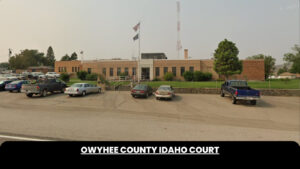Eastern District of Arkansas
Introduction
The United States District Court for the Eastern District of Arkansas is the federal district court with jurisdiction over the eastern half of Arkansas. It is one of two federal judicial districts in the state, along with the Western District of Arkansas. The Eastern District of Arkansas hears cases that fall under federal law, including matters related to the U.S. Constitution, federal statutes, or between citizens of different states. It serves an important role in the federal judiciary and in upholding justice in the eastern portion of the state.
History and Establishment
Early History
The Eastern District of Arkansas has a long history dating back to the early 19th century when Arkansas was still a territory. Congress established the United States District Court for the Territory of Arkansas on March 2, 1819. At this time, it was Arkansas’ only federal district court. Judges appointed to the court had jurisdiction over legal matters arising anywhere within the Arkansas Territory. After Arkansas became a state in 1836, the territorial court essentially became the U.S. District Court for the Eastern District of Arkansas.
Established in 1819
The Eastern District of Arkansas itself was formally established on June 15, 1836 when Congress divided the Arkansas Territory into an eastern and western district. The dividing line was the range of mountains that ran north to south approximately halfway through the state. Thus, the Eastern District of Arkansas covered the eastern half of Arkansas. Its first court session was held in Arkansas Post in December 1836.
Jurisdiction and Divisions
The Eastern District of Arkansas comprises 35 counties in the eastern half of the state. It is further divided into five divisions to handle the caseload more efficiently.
Northern Division
The Northern Division consists of Cleburne, Fulton, Independence, Izard, Jackson, Sharp, and Stone counties. It covers the northeastern corner of the state. The divisional office is located in Batesville.
Eastern Division
The Eastern Division handles cases from Cross, Lee, Monroe, Phillips, St. Francis and Woodruff counties in the far eastern part of the state. Its divisional office is in Helena.
Jonesboro Division
The Jonesboro Division covers Clay, Craighead, Crittenden, Greene, Lawrence, Mississippi, Poinsett, Randolph counties in the northeast. The divisional office for this district is located in Jonesboro.
Western Division
The Western Division comprises Conway, Faulkner, Lonoke, Perry, Pope, Prairie, Pulaski, Saline, Van Buren, White and Yell counties in the central part of the state. The divisional office is located in Little Rock, the state capital.
Pine Bluff Division
The Pine Bluff Division handles cases from Arkansas, Chicot, Cleveland, Dallas, Desha, Drew, Grant, Jefferson and Lincoln counties in the southeastern part of the district. Its divisional office is located in Pine Bluff.
Courthouse and Key Officials
The Eastern District of Arkansas is headquartered at the Richard Sheppard Arnold United States Courthouse in downtown Little Rock. All Little Rock divisional court offices are housed here.
Courthouse
The Richard Sheppard Arnold United States Courthouse is located at 600 West Capitol Avenue in Little Rock. It was completed in 2006 and named after esteemed Arkansas judge Richard Arnold. The courthouse has courtrooms and office space for judges and staff of the Eastern District federal court. It also contains bankruptcy court facilities.
U.S. Marshal
The U.S. Marshal is the chief law enforcement officer for the Eastern District of Arkansas. The Marshal oversees court security, transports federal prisoners, protects witnesses, manages seized assets, and enforces federal court orders. The position is currently vacant.
Federal Cases and Controversies
The Eastern District of Arkansas sees a wide range of federal cases and controversies within its jurisdiction. Judges preside over trials, hearings, motions and other matters.
Notable Cases
Some of the higher profile cases in the Eastern District of Arkansas include the Whitewater scandal trial of President Bill Clinton and Governor Jim Guy Tucker in 1996, and antitrust lawsuits against tech companies like Apple and Google. Massive class action lawsuits have been filed in the district as well, including cases against drug companies and polluters.
Judges in the Eastern District have handled constitutional issues like the legality of abortion restrictions and same-sex marriage bans. Death penalty habeas corpus petitions and other criminal cases receive much attention. The court has also overseen important education cases related to desegregation and school funding.
Controversies
The Eastern District has faced controversies at times regarding judicial impartiality. In 2009, Judge G. Thomas Eisele was criticized for sharing anti-immigration article emails with court staff. Judge James Moody has faced questions about his ties to political figures in cases he oversaw. The court’s handling of the Whitewater scandal led to accusations of partisanship as well.
Reversal rates of the court’s decisions have also caused disputes. From 2010-2015, the Eighth Circuit Court of Appeals reversed 75% of the Eastern District’s cases it reviewed. Defense lawyers have argued certain judges’ rulings are unfair.
Comparison to Western District
As the two federal judicial districts in Arkansas, the Eastern and Western Districts share similarities but also have differences. Both cover their respective halves of the state and maintain divisional offices to handle their caseloads. However, the Eastern District tends to have a higher profile given Little Rock is located within its boundaries. Prominent cases like Whitewater took place there, and it oversees Pulaski County where the state capitol and largest city are located. The Eastern District’s population is around 1.5 million compared to 1.3 million in the Western District. Both play crucial roles in upholding justice and interpreting federal law in the state.
Conclusion
Key Facts
In summary, key facts about the U.S. District Court for the Eastern District of Arkansas include:
- Established in 1819 when Arkansas was a territory; split into Eastern and Western Districts in 1836
- Headquartered in Little Rock at the Richard Sheppard Arnold Courthouse
- Oversees 35 eastern Arkansas counties divided into 5 divisions
- Hears federal cases involving federal law, the Constitution, government agencies, etc.
- Notable cases include Whitewater, antitrust lawsuits, death penalty appeals
- Handles around 3,000 new cases per year with 8 district judges
FAQs
What type of cases does the Eastern District of Arkansas handle?
The Eastern District handles federal civil and criminal cases that arise under federal statutes, the U.S. Constitution, or between citizens of different states. This includes matters related to federal agencies, civil rights, government programs, business and commerce across state lines, and more.
How many judges preside in the Eastern District?
The Eastern District of Arkansas currently has eight federal district judges who are appointed by the President and confirmed by the Senate. The court also utilizes visiting judges from other districts and magistrate judges.
When does the Eastern District court meet?
The Eastern District holds court sessions on weekdays year-round, except for federal holidays. Each division sets its own calendar of hearing dates. Trials, motions, sentencings, arraignments and other matters are scheduled throughout the year.
What is the Arkansas Post significance?
The Arkansas Post was the first county seat in the state. It hosted the first session of the Eastern District court in December 1836 shortly after the district was established. This made it an important early landmark for the federal court.
How can I access public records of the Eastern District?
Many court records can be accessed through the Public Access to Court Electronic Records (PACER) system online. Additionally, case documents are available for viewing at the clerk’s office in each division. Some records may be sealed or limited by court order.





